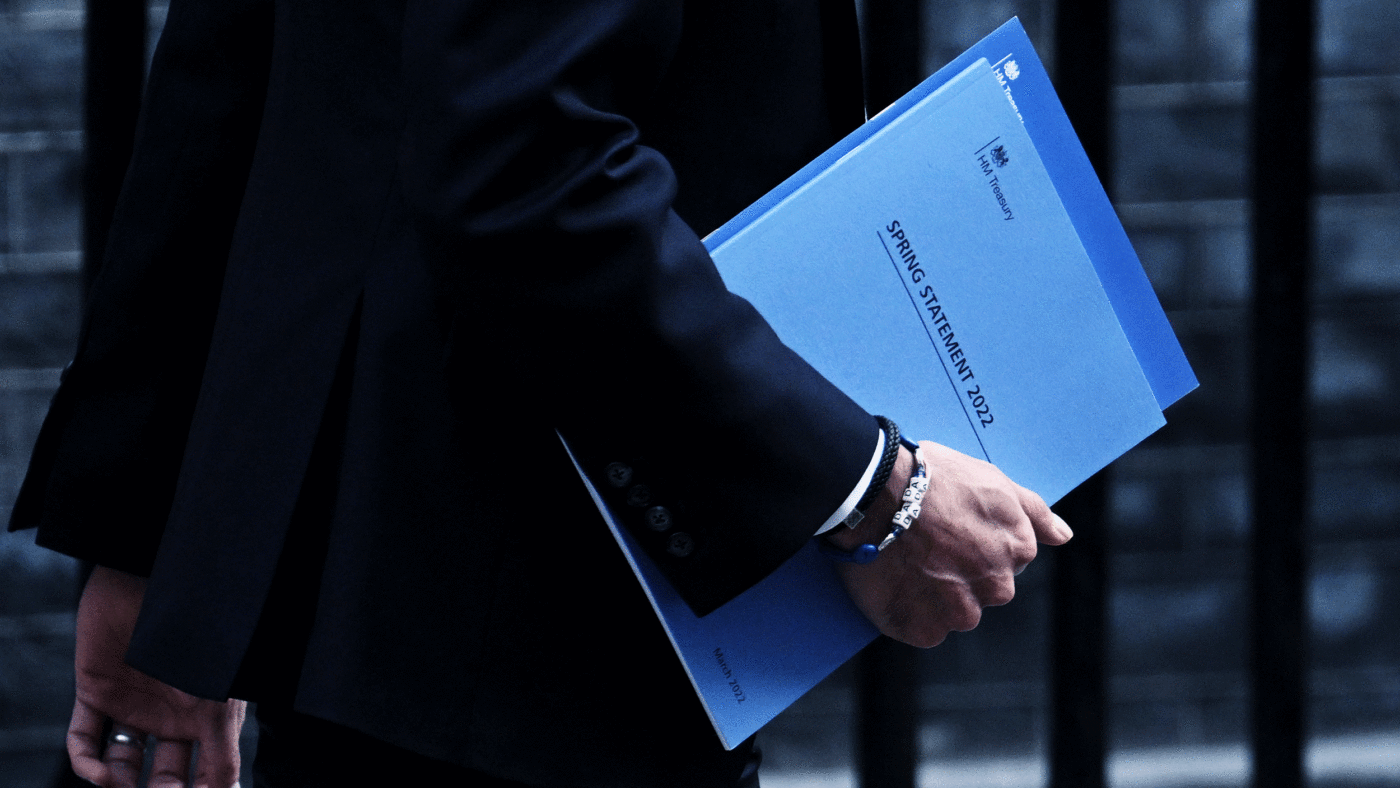This week’s Spring Statement included some big, bold announcements, with obvious voter appeal. But the windfall from higher-than-expected tax receipts and the downside risks to economic growth mean that the Chancellor could, and probably should, have done much more.
It is worth repeating that the public finances are in better shape than anticipated. Government borrowing is forecast to fall from 15% of GDP in 2020-21 to around 1% in 2026-27, with the headline debt measure falling from over 95% of GDP to 83%.
This is despite the surge in inflation – and indeed partly because of it. Over time, the boost to tax revenues from higher nominal incomes and prices (think of all those extra VAT receipts) will more than offset the higher cost of servicing government debt.
You might not have picked this up from the gloomy headlines. But aside from a small upward revision to the estimate for 2022-23, government borrowing is now projected to be lower than previously expected in every year of the forecast horizon. The debt-to-GDP ratio is forecast to fall more quickly too.
This left ample room for bigger tax cuts (or at least a rethink of planned tax hikes), and for more realistic increases to benefits. Even if you are not a fan of state welfare in general, it makes little sense to raise benefits by far less than inflation when low-income households will be hit hardest by the cost-of-living crisis.
Instead, the Chancellor drew attention to the record-high figure for ‘debt interest costs’ of £83 billion in 2022-23. At face value this is far more than the Government is expecting to spend on, say, defence, and topped only by expenditure on the NHS, state pensions, and education. But these comparisons are misleading.
For a start, this jump in ‘debt interest’ is a one-off: ‘debt interest’ is forecast to peak at 3.3% of GDP in 2022-23, but then to fall to 1.9% in 2023-24 and to be back at its 2019-20 level of 1.6% by 2026-27.
In addition, the jump in 2022-23 mainly reflects the temporary spike in RPI inflation, which raises the cost of inflation index-linked bonds, rather than higher short-term interest rates or conventional bond yields. It has little to do either with the increase in the level of debt.
Above all, the £83 billion figure is not what most people seem to think it is, namely the amount of money that the Government will have to pay in debt interest in 2022-23. Instead, it mainly reflects the RPI uplift to the principal value of index-linked bonds when they are eventually redeemed. This uplift increases the Government’s liabilities, which the ONS and OBR count as borrowing in the year these additional liabilities accrue, even if there’s no cash flow until much later.
This is really important, because it means that the Government won’t actually have to find the full £83 billion for many years, even decades in the future, when its real cost will be much lower. It is certainly not directly comparable to annual spending on other departments.
This is one of several reasons why the Chancellor was wrong to be so cautious. He could have used more of the wiggle room in the public finances to support low-income households in particular, via the benefit system. And if it makes sense to cut the basic rate of income tax in 2024, why not do it now?
Talk of ‘giveaways’ is particularly misleading here. People and businesses are already paying more in tax than expected. The Chancellor would simply be giving some more of that money back.
The Chancellor has also insisted that he needs a large ‘margin of safety’, citing the OBR’s view that any fiscal headroom could be ‘wiped out by relatively small changes to the economic outlook’. But this headroom is measured against fiscal targets which are pretty arbitrary anyway.
Worse still, an overly cautious approach risks turning what might only be a temporary squeeze on real incomes into a full-blown recession. Then it would be too late. A wait-and-see policy would not then be the safer option when doing more now could actually secure a stronger recovery.
The overriding priorities should therefore be to support the economy and to help to protect the most vulnerable from the worst of the cost-of-living crisis. Perhaps the Chancellor has been distracted by the brighter Spring weather. But for many, it is set to rain even harder.
Click here to subscribe to our daily briefing – the best pieces from CapX and across the web.
CapX depends on the generosity of its readers. If you value what we do, please consider making a donation.


